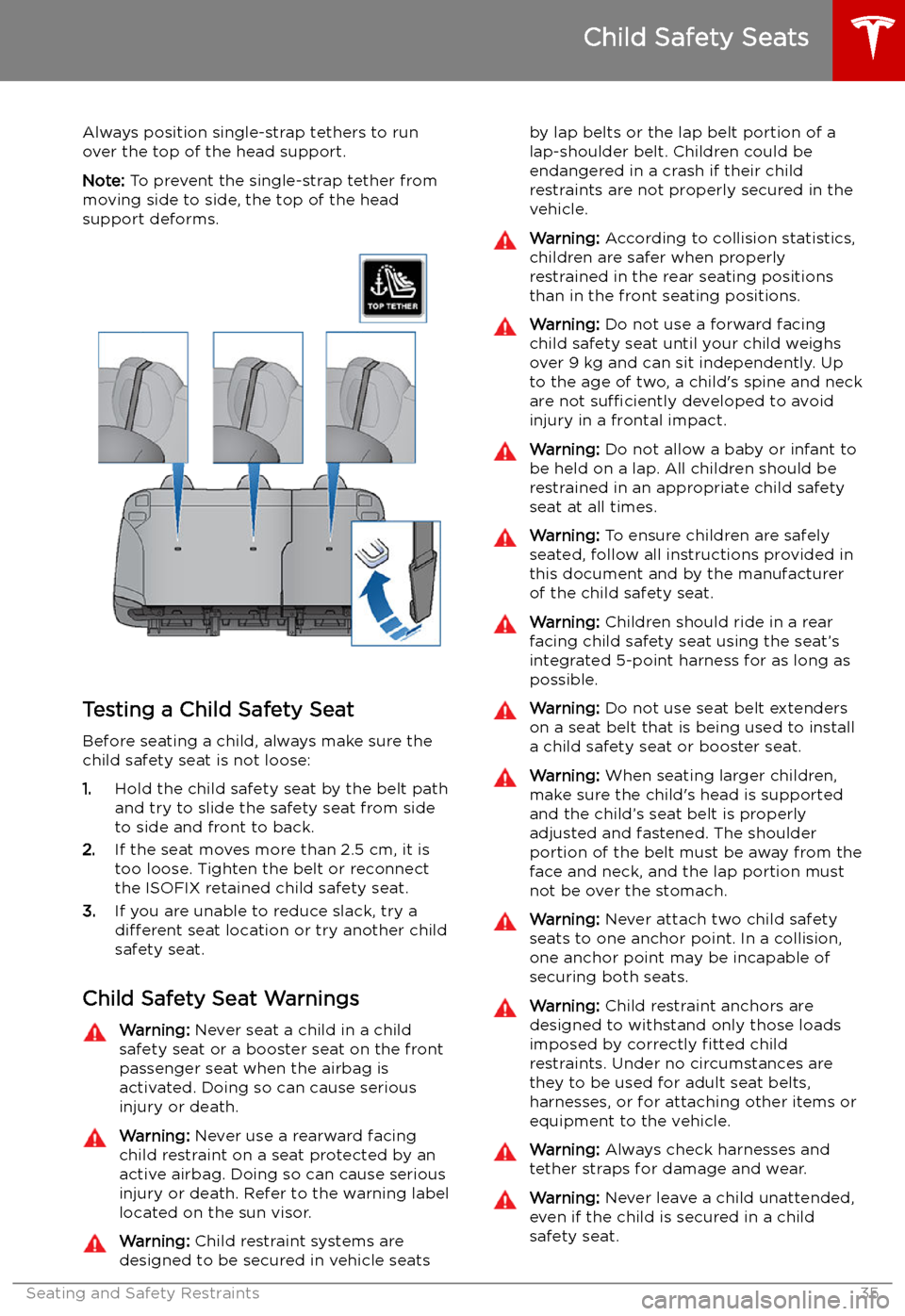Page 32 of 207
Choosing a Child Safety SeatRefer to the following tables for guidelines on the type of seat belt installed and ISOFIX installedchild restraint you should use based on the weight of the child.
Seat Belt Installed Child RestraintsMass GroupFront Passenger*Rear OutboardRear CenterGroup 0up to 10 kgXUUGroup 0+up to 13 kgL**UUGroup I9 - 18 kgUF***U, UFU, UFGroup II15 - 25 kgUF***U, UFU, UFGroup III22 - 36 kgUF***U, UFU, UFU: Universal rear facing child restraint.
UF: Universal forward facing child restraint.
L: Suitable for these particular child restraints - Maxi-Cosi Cabrio/Cabriofix E4 04443517 or
Takata Mini E4 04443717.
X: Seating position is not suitable for children in this mass group.
* It is the driver
Page 33 of 207

ISOFIX* Installed Child Restraints
Mass GroupSize ClassFixtureRear Outboard
ISOFIX PositionGroup 0up to 10 kgER1
Note: Attach
booster seats
using seat belts
only (do not use ISOFIX).IL
Group 0+up to 13 kg
ER1ILA, CDR2ILA, CCR3IL A, C
Group I9 - 18 kg
DR2ILBCR3IL BBF2IUF, IL B, DB1F2XIUF, IL B, DAF3IUF, ILB, DIL: Suitable for any semi-universal child restraint (any rear or forward facing restraint with
support leg).
IUF: Suitable for any universal child restraint (forward facing with tether). A Recommendation: Takata Mini E4 04443717.
B Recommendation: Takata Midi E4 04444204.
C Recommendation: Maxi-cosi Cabriofix/Easyfix E4 04443517.
D Recommendation: Maxi-cosi Pearl/Familyfix E4 043908.
Note: ISOFIX is the international standard for attachment points for child safety seats in
passenger vehicles.
Warning: Do not use Isofix/i-Size anchors with child restraint system or booster seats that
have an integral safety belt where the combined weight of the child plus the child restraint system exceeds 33 kg.
Child Safety Seats
32Model S Owner
Page 35 of 207

In the second row, install ISOFIX child safety
seats in the outboard seating positions only.
Use only a seat belt retained seat in the center
position.
To install a ISOFIX child safety seat, slide the
safety seat latches onto the anchor bars until
they click into place. Carefully read and follow
the instructions provided by the child safety
seat manufacturer.
Once installed, test the security of the installation before seating a child. Attempt to twist the child safety seat from side to side
and try to pull it away from the seat, then
check to ensure the anchors remain securely
in place.
Note: Lower ISOFIX anchors should not be
used with child seats or booster seats that
have an integrated safety belt in situations
where the combined weight of the child plus
the child restraint is more than 33 kg. In these situations, use the safety belt instead.
Attaching Upper Tether Straps
If an upper tether strap is provided, attach its
hook to the anchor point located on the back of the rear seats.
Note: The location of anchor points may not
be readily visible but can be found by
identifying a slice in the seat
Page 36 of 207

Always position single-strap tethers to run
over the top of the head support.
Note: To prevent the single-strap tether from
moving side to side, the top of the head support deforms.
Testing a Child Safety Seat
Before seating a child, always make sure the
child safety seat is not loose:
1. Hold the child safety seat by the belt path
and try to slide the safety seat from side
to side and front to back.
2. If the seat moves more than 2.5 cm, it is
too loose. Tighten the belt or reconnect
the ISOFIX retained child safety seat.
3. If you are unable to reduce slack, try a
different seat location or try another child
safety seat.
Child Safety Seat Warnings
Warning: Never seat a child in a child
safety seat or a booster seat on the front
passenger seat when the airbag is
activated. Doing so can cause serious injury or death.Warning: Never use a rearward facing
child restraint on a seat protected by an
active airbag. Doing so can cause serious
injury or death. Refer to the warning label
located on the sun visor.Warning: Child restraint systems are
designed to be secured in vehicle seatsby lap belts or the lap belt portion of a lap-shoulder belt. Children could be
endangered in a crash if their child restraints are not properly secured in the
vehicle.Warning: According to collision statistics,
children are safer when properly
restrained in the rear seating positions
than in the front seating positions.Warning: Do not use a forward facing
child safety seat until your child weighs
over 9 kg and can sit independently. Up
to the age of two, a child